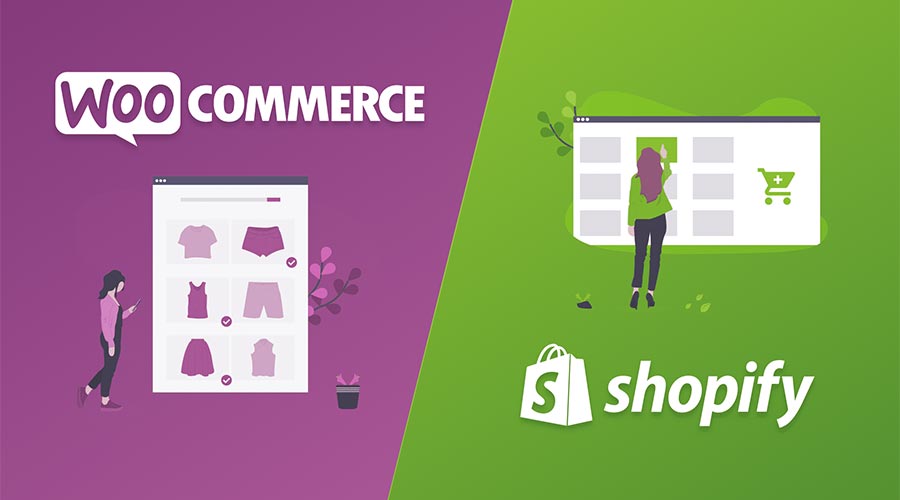Social media isn’t just about connecting with mates and family; it’s a powerful engine for businesses to build brands, engage audiences, and drive growth. However, navigating this complex ecosystem without data is like setting sail without a compass. This is where social media analytics tools come into play, offering invaluable insights into your performance, audience behaviour, and the overall effectiveness of your social media strategy.
However, with a wide range of options available, choosing the right tool can feel overwhelming. Let’s check some of the most widely used social media analytics tools in 2025, outlining their pros, cons, prices, and performance capabilities to help you make a well-informed decision.
The Big Players: Comprehensive Suites
These are the all-singing, all-dancing platforms that offer a wide array of features, often encompassing scheduling, publishing, engagement, listening, and in-depth analytics across multiple social media platforms.
Sprout Social
A top-tier platform known for its user-friendly interface and robust suite of tools covering analytics, engagement, and publishing across various social networks.
- Pros: Sprout Social boasts a user-friendly interface, robust reporting capabilities, excellent customer support, and strong team collaboration features. It’s SmarIt’s box consolidates all your social media interactions into one stream, making engagement efficient. Advanced features include competitive analysis, trend identification, and detailed audience demographics.
- Cons: It can be one of the pricier options, particularly for larger teams or those requiring advanced features. The depth of analytics for every single platform might not be as granular as some platform-specific tools.
- Performance: Known for its reliable data collection and clear visualisations, Sprout Social provides actionable insights into audience engagement, reach, impressions, and website traffic driven by social media. Its reporting features allow for easy customisation and export.
- Pricing: Sprout Social offers various plans, typically ranging from around £200 to £400+ per month (as of late 2024, these prices are subject to change and depend on features and the number of users). They often provide a free trial.
Hootsuite
A long-established and widely used platform offering broad social media management capabilities, including scheduling, monitoring, and analytics, with extensive app integrations.
- Pros: Hootsuite is a seasoned veteran in the social media management space, offering comprehensive platform support, extensive app integrations, and flexible pricing plans. Its bulk scheduling and content calendar features are highly efficient for managing large volumes of content.
- Cons: The user interface can sometimes feel less intuitive compared to newer platforms. While it offers a wide array of features, some of the more advanced analytics functionalities might require higher-tier plans or integrations.
- Performance: Hootsuite offers a comprehensive overview of key metrics, including follower growth, engagement rates, and reach. Its reporting features are customisable, allowing users to track specific KPIs across different platforms.
- Pricing: Hootsuite offers a wide range of plans, starting from free (with limited features) to professional plans, ranging from approximately £80 to £650+ per month (as of late 2024; prices are subject to change).
Buffer
A streamlined and user-friendly tool focusing on efficient scheduling and basic analytics, making it an excellent option for those prioritising simplicity.
- Pros: Buffer is praised for its clean and intuitive interface, making it easy for beginners to get started with social media management and analytics. It focuses on core functionalities, such as scheduling, publishing, and basic analytics, making it a streamlined option.
- Cons: The analytics offered in the lower-tier plans are relatively basic compared to more comprehensive tools. It may lack some advanced features, such as social listening or competitive analysis, found in Sprout Social or Hootsuite.
- Performance: Buffer provides clear and easy-to-understand insights into post performance, audience activity, and basic engagement metrics. It’s a choice for users who prioritise simplicity and core analytics.
- Pricing: Buffer offers a free plan with limited features and paid plans that typically range from around £5 to £100+ per month (as of late 2024; prices are subject to change).
HubSpot Social Media
Integrated within the broader HubSpot marketing platform, this tool excels at connecting social media data with CRM and other marketing activities for a holistic view of performance.
- Pros: As part of a larger marketing automation platform, HubSpot provides seamless integration between your social media efforts and other marketing activities, including email marketing, CRM, and content management. This enables a comprehensive view of your marketing performance, allowing you to attribute leads and conversions to social media. It offers tools for scheduling, publishing, and basic analytics, with more advanced features available in higher-tier plans.
- Cons: While the integration is a significant advantage, the social media analytics within HubSpot can be less in-depth compared to dedicated social media analytics tools, especially in the lower-tier plans. The pricing can become quite expensive as you scale and require more advanced features or a larger number of contacts. It also currently lacks native integration with TikTok.
- Performance: HubSpot provides reports on key social media metrics like reach, engagement, and website clicks driven by social media. Its strength lies in connecting this data to your overall marketing funnel, allowing you to see which social media activities contribute to lead generation and customer acquisition within the HubSpot CRM.
- Pricing: HubSpot’s pricing is tiered based on “hubs” (Marketing, Sales, Service, CMS, Operations) and the level of features within each hub, as well as the number of marketing contacts. For the Marketing Hub, which includes social media tools, plans range from approximately £15 per month (Starter, with limited features) to £ 750+ per month (Professional and Enterprise, offering more comprehensive analytics and automation – as of late 2024, these prices are subject to change). Onboarding fees may also apply for higher-tier plans.
Falcon.io (now part of Brandwatch)
A powerful platform, now part of Brandwatch, offering advanced social media management, including sophisticated analytics, listening, and engagement features, particularly well-suited for larger teams and agencies.
- Pros: Falcon.io, now integrated into the Brandwatch platform, offers a robust suite of social media management tools, including advanced analytics, social listening, engagement features, and content planning. It’s known for its user-friendly interface, customisable dashboards, and strong collaboration features, making it suitable for agencies and larger teams. It supports a wide range of platforms and offers in-depth insights into audience behaviour and content performance.
- Cons: Some users have reported that the analytics, although comprehensive, may not be as granular as platform-specific native tools for specific platforms. Additionally, its pricing can be on the higher side, potentially making it less accessible for smaller businesses or individual users. Some users have also mentioned occasional issues with the reliability of publishing to specific platforms and the accuracy of sentiment analysis.
- Performance: Falcon.io provides detailed analytics on engagement, reach, impressions, and audience demographics across multiple platforms. Its customisable dashboards allow users to track the specific metrics that matter most to their business. The platform also offers competitive benchmarking features and social listening capabilities to understand brand mentions and industry trends.
- Pricing: Brandwatch (including Falcon.io features) offers various plans, and pricing is often customised based on the specific features and scale required. The “Essentials” plan, designed for smaller businesses, starts at approximately £90 per month (as of late 2024, this price is subject to change). More comprehensive plans for larger teams and enterprises will have higher custom pricing.
Focusing on Specific Platforms: Native and Third-Party Tools
While the comprehensive suites offer broad coverage, sometimes you need a more in-depth examination of the analytics for a specific platform.
Meta Business Suite (Facebook & Instagram)
- Pros: Meta Business Suite, as a native platform, provides the most detailed and up-to-date insights into your audience, content performance, and advertising campaigns on Facebook and Instagram. It’s free. It’s used for businesses with a Facebook Page or an Instagram Business account.
- Cons: It’s limited to Facebook and Instagram. The sheer volume of data can sometimes be overwhelming, and the reporting features may not be as customisable as those of dedicated third-party tools.
- Performance: Provides granular data on reach, impressions, engagement (likes, comments, shares, saves), audience demographics, and the performance of individual posts and stories. It also offers limited insights into your competitors.
- Pricing: Free.
Pinterest Analytics
- Pros: Pinterest Analytics provides insights into Pin performance, audience demographics, and website traffic generated from Pinterest. It’s free for Pinterest business accounts.
- Cons: Limited to Pinterest data.
- Performance: Helps businesses understand which Pins and boards resonate most with their audience, track referral traffic to their website, and measure the effectiveness of their content strategy on Pinterest.
- Pricing: Free.
LinkedIn Analytics
- Pros: LinkedIn provides insights into your Page’s presence, follower demographics, post engagement, and the reach of your content within professional networks. It’s free. It’s the LinkedIn Page admins.
- Cons: Limited to LinkedIn data. The depth of analytics might not be as extensive as some specialised B2B analytics tools.
- Performance: Helps businesses understand their reach and engagement within the professional community, identify key demographics of their followers, and measure the impact of their content marketing efforts on LinkedIn.
- Pricing: Free.
TikTok Analytics
- Pros: TikTok‘s analytics tool offers insights into video views, profile views, follower growth, engagement metrics (likes, comments, shares), and audience demographics specific to the platform. It’s free. It’s TikTok Business accounts.
- Cons: Limited to TikTok data. The analytics are still evolving compared to more mature platforms.
- Performance: Provides crucial data for understanding content performance on TikTok, identifying trending sounds and hashtags, and learning about your audience’s behaviour on the platform.
- Pricing: Free.
Third-Party Platform-Specific Tools
Beyond the native analytics, various third-party tools specialise in providing deeper insights for specific platforms. Examples include tools that focus on in-depth Instagram analytics (e.g., Iconosquare, Later) or YouTube analytics (e.g., TubeBuddy, Vidiq). These often offer more advanced reporting, competitive analysis, and audience segmentation features tailored to the specific nuances of each platform. Pricing for these tools varies significantly.
Key Considerations When Choosing a Tool:
- Your Goals: What specific metrics are most important to your social media strategy? Are you focused on engagement, reach, conversions, or brand awareness?
- Platforms You Use: Ensure the tool supports all the social media platforms on which your business is active.
- Budget: Analytics tools range from free to hundreds or even thousands of pounds per month. Determine a budget that aligns with your needs and resources.
- Ease of Use: Select a tool with an intuitive interface that is easy for your team to navigate and understand.
- Reporting Needs: Consider the level of detail and customisation you require in your reports.
- Team Collaboration: If you have a team managing your social media, look for tools that offer collaboration features to streamline your workflow.
- Scalability: As your social media presence grows, will the tool be able to scale with your needs?
Performance in 2025: Trends and Expectations
In 2025, social media analytics tools are expected to become even more sophisticated, leveraging advancements in artificial intelligence (AI) and machine learning. Key trends include:
- Predictive Analytics: Tools will likely offer more advanced predictions about future performance based on historical data.
- Sentiment Analysis: Deeper and more nuanced understanding of audience sentiment towards brands and content.
- Attribution Modelling: More accurate tracking of the customer journey from social media interactions to conversions.
- Cross-Platform Integration: Seamlessly combining data from various platforms to provide a holistic view of social media performance.
- Real-time Analytics: Providing up-to-the-minute insights to enable timely adjustments to strategies.
Data-Driven Success
Social media success in 2025 hinges on a data-driven approach. By leveraging the power of social media analytics tools, businesses can gain a deeper understanding of their audience, optimise their content strategy, measure their ROI, and ultimately achieve their marketing goals. Carefully consider your specific needs and budget to choose the tool that best empowers your journey through the ever-evolving social media labyrinth. Don’t be afraid to explore free trials and compare different options before committing to a long-term solution. The insights you gain will be invaluable in navigating the social media landscape and achieving optimal results for your business.







